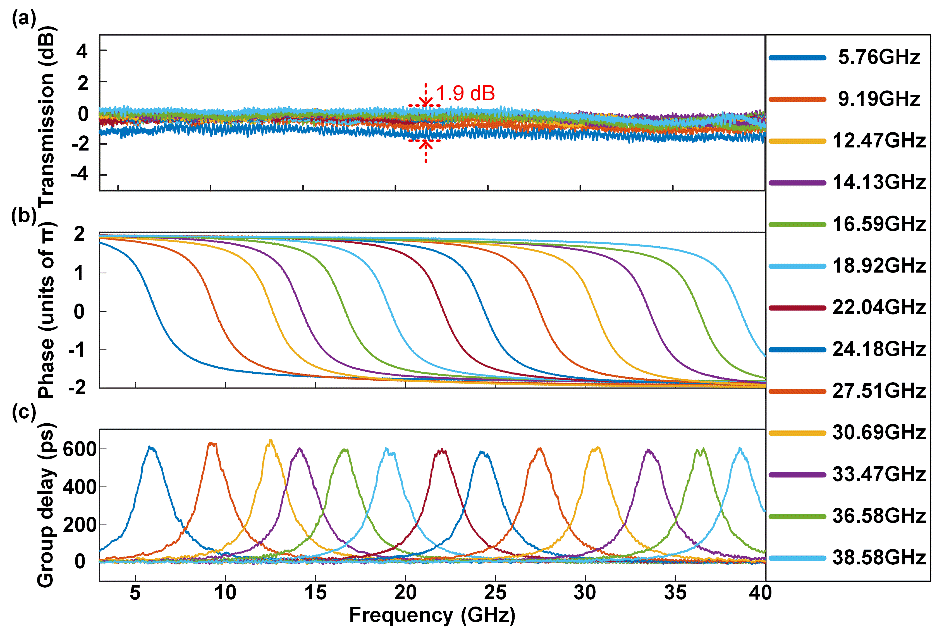In recent years, silicon-based integrated photonic devices have been attracting great interest due to their advantages of small size, low power consumption, and strong immunity to electromagnetic interference, and are considered as one of the most important trends of optical communication technology. Microring resonators are fundamental components of integrated photonics, and their phase-shifting property can be used to design the phase manipulated devices. However, because of the waveguide loss, the phase shift of the microring also accompanies with the amplitude variation. To solve this problem, it has been reported that a first-order optical all-pass filter (APF) which is realized by interference can control the signal phase without amplitude variation. However, phase shift range and time delay of the first-order APF are limited and cannot satisfy the requirements in applications. In addition, although high-order APF can be simply obtained by cascading multiple first-order APFs, the power consumption and complexity of the device are increased.
To solve these problems, Professor Xinliang Zhang and Associate Professor Yuan Yu from Wuhan National Laboratory for Optoelectronics, Huazhong University of Science and Technology recently published their latest research results on Nanophotonics. A second-order reconfigurable all-pass optical filteris proposed and demonstrated. The structure of the design is shown in Figure 1. The principle can be understood as that the band-stop response induced by through port of a microring is converted into a band-pass response after interference with the light transmitted by the waveguide. Then, the band-pass response is cascaded with another microring. When the band-stop response of the second microring complementary to the band-pass response, an all-pass response is obtained. Additionally, the resonant wavelengths of two microrings are aligned with each other to ensure that the amplitude response is constant. In the achieved second-order APF, the phase variation in an FSR is twice that of the first-order APF based on a single microring.

Fig. 1:Schematic diagram ofthereconfigurable second-order APF
Based on the silicon photonic processing platform, a reconfigurable second-order optical APF was designed and fabricated. By tuning the coupling coefficient, the resonant wavelength of the MRR, and the phase shift of the interference arm, a second-order APF is realized. Shown as the blue line in Figure 2, the amplitude variation is within 1.4 dB, the phase shift is 3.89π, and the maximum time delay is 553ps from 5 to 40 GHz. The corresponding insertion loss is 7.2 dB at 1550nm. By tuning the coupling coefficient of the microring, the structure also realizes the adjustment of the delay response, shown as the black, red and green lines in Figure 2, respectively. The maximum time delays are 643, 805 and 948ps, respectively. The phase response of the second order APF is also tunable. As shown in Figure 3, by tuning the resonant wavelength of the microring, the center of the phase shift area of the second-order APF can be tuned from 5.76 to 38.58 GHz, the transmission variation is less than 1.9 dB during the tuning process.

Fig. 2: Experimental results of the second-order APF

Fig. 3: Experimental results of tuning the second-order APF
The second-order APF is an ideal candidate to realize a broadband tunable microwave photonic phase shifter. Figs.4 shows the amplitude and phase responses of the microwave photonic phase shifter realized by the second-order APF. The bandwidth of the microwave photonic phase shifter covers 5~40GHz, and the phase shift range is 0~3.27π, while the RF power variation iswithin2.4 dB.

Fig. 4: Experimental resultsof microwave photonic phase shifter based on second-order APF
The approach to realizing the second-order all-pass optical filter is potentially extended to achieving a higher-order all-pass optical filter with simple structure, high integration and low power consumption. It has important potential applications in phased array radar and optical signal processing and other aspects.
This work has been published in Nanophotonics with the title Reconfigurable second-order opticalall-pass filter. Yu Chen is the first author of the paper, and Associate Professor Yuan Yu is the corresponding author.
Full text can be viewed by: https://doi.org/10.1515/nanoph-2022-0140
[1] Yu Chen, Lu Xu, Wei Jun Jiang, Lin Wang, Shuai Cui, Yu Yu, Yuan Yu ORCID logo and Xinliang Zhang, “Reconfigurable second-order opticalall-pass filter,” Nanophotonics, 11(13), pp. 3115-3125, 2022.